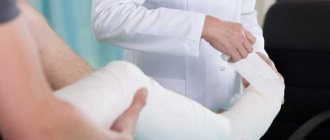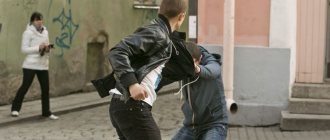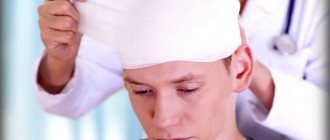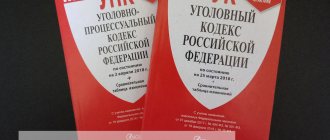Russia is one of the world leaders in the number of injured and killed in road accidents. In 2022 alone, road accidents claimed 18 thousand lives. This is the population of a small town. The number of non-fatal victims is 215 thousand. The problem is aggravated by the fact that most of the dead and injured are young and healthy people before the accident.
Those responsible for road accidents bear several types of liability - administrative, civil, criminal. A variety of penalties are provided for drivers and vehicle owners - from small fines for causing damage to health to long-term isolation from society if there are serious consequences.
Types of liability
At the legislative level, 3 types of liability are established in case of an accident causing harm to health and life:
- civil;
- administrative;
- criminal
Civil liability consists of compensating harm to injured persons and rests with vehicle owners. It occurs under any circumstances, regardless of whether the driver is guilty of causing an accident or not, due to the fact that the car is defined by the Civil Code as a source of increased danger (Article 1079 of the Civil Code of the Russian Federation).
Administrative and criminal liability depends on the type of offense (crime) committed by the guilty person. These types of liability do not apply at the same time. The degree of guilt and type of punishment are determined taking into account the consequences of the accident.
These types of liability are borne by direct participants in the accident, as well as by persons responsible for the circumstances that led to the accident. Most often, vehicle drivers are responsible for accidents with injuries and deaths.
In what cases can a driver be punished?
Another important point that many drivers do not pay attention to. Punishment for causing harm to health in an accident can be imposed in case of any violation of traffic rules . This also includes violations for which there is no fine.
The driver of car C hit a pedestrian outside a pedestrian crossing. Obviously, in this case there is a violation of the rules on the part of the pedestrian.
However, if it turns out that the speed of the car before the collision in a populated area was 61 km/h or more, then the driver may be punished for causing harm to health in an accident.
Again. A fine is imposed only for speeding by 20 km/h or more. However, fault in an accident appears for exceeding 1 km/h or more.
Causing grievous bodily harm in an accident
This is one of the most serious situations. Serious bodily harm in an accident is a reason for criminal prosecution of the culprit of the accident. The case is initiated based on the results of a forensic medical examination. According to severity, harm is divided into:
- easy;
- average;
- heavy
The last degree is the most dangerous for humans. Serious harm is a high probability of death during an accident or some time after it, loss of vital body functions.
The qualifying signs of grave harm, according to clause 4 of the Rules for determining the severity of harm caused to human health, approved by Decree of the Government of the Russian Federation of August 17, 2007 No. 522, are:
- harm dangerous to human life;
- loss of vision, speech, hearing or any organ or loss of organ functions;
- abortion;
- mental disorder;
- drug addiction or substance abuse;
- permanent facial disfigurement;
- significant permanent loss of general ability to work by at least one third;
- complete loss of professional ability...
To classify harm to health as serious, it is sufficient to have at least one of the injuries that threaten a person’s life or lead to a dangerous condition, including:
- coma;
- shock 3-4 degrees;
- excessive blood loss;
- cardiac, renal, respiratory failure;
- a head wound penetrating the skull or an intracranial wound;
- cervical injuries;
- spine fracture;
- open and closed chest injuries;
- multiple rib fractures;
- penetration into the abdominal cavity;
- loss of vision, speech, hearing;
- loss of any organ, etc.
The full list of medical criteria for serious harm is contained in paragraph 6 of the Appendix to Order of the Ministry of Health and Social Development dated April 24, 2008 No. 194n.
How is the amount of compensation determined?
If serious harm is caused in a traffic accident, the injured party may be entitled to compensation. Since the damage was caused in an accident, compensation for it is carried out within the framework of the civil liability of the vehicle owner at the expense of the insurance company that sold the driver the MTPL policy. Therefore, the amount of damages subject to compensation will be determined in accordance with Chapter 4 of the Rules, approved. Central Bank Regulation No. 431-P.
Note!
According to it, the amount of compensation to be paid is determined in the amount of expenses incurred by the injured person for treatment and rehabilitation: the cost of medications, operations, prosthetics, special nutrition, purchase of special vehicles, sanatorium treatment. But only those expenses that he can document.
In addition, the insurance company must compensate for lost earnings as a result of the damage. According to clause 4.3 of the Rules, it is determined as a percentage of the average salary or other labor income of the victim, corresponding to the percentage of disability.
However, compensation from the insurer is paid only within the maximum amounts of insurance compensation established by Art. 7 Federal Law No. 40 “On Compulsory Motor Liability Insurance”, according to which such a maximum amount in relation to harm to life and health is 500 thousand rubles. If the costs incurred as a result of injury/injury exceed the specified amount, compensation for the part not covered by insurance is borne by the person causing the damage - the at-fault driver. This is established by Art. 1064 Civil Code.
What does a driver face for an accident with serious bodily injury?
Such an offense can be punishable by up to 15 years. The punishment for causing grievous harm in an accident is established by the Criminal Code of the Russian Federation.
The type of sanction is determined by the court individually and depends on:
- on the condition of the driver at the time of the accident;
- assessing the severity of the harm caused;
- the presence of mitigating or aggravating circumstances.
Liability measures for serious injury to health due to negligence (Article 264 of the Criminal Code of the Russian Federation) are presented in the table. The choice of a specific punishment is made by the judge.
| Types of sanctions | |||
| Restriction of freedom | Forced labor | Arrest | Deprivation of liberty |
| Part 1 Art. 264 of the Criminal Code of the Russian Federation: Violation by the driver of traffic rules or vehicle operating rules, resulting in serious harm | |||
| up to 3 years | up to 2 years + deprivation of the right to occupy a position positions or engage in op. activities up to 3 years or without it | up to 6 months | up to 2 years + deprivation of the right to occupy a position positions or engage in op. activities up to 3 years or without it |
| Part 2 Art. 264 of the Criminal Code of the Russian Federation: An act provided for in Part 1, committed while intoxicated or involving leaving the scene of an accident | |||
| up to 5 years + deprivation of the right to occupy a position positions or engage in op. activities up to 3 years | from 3 to 7 years + deprivation of the right to occupy a position. positions or engage in op. activities up to 3 years | ||
| Part 3 Art. 264 of the Criminal Code of the Russian Federation: An act provided for in Part 1, resulting in the death of a person | |||
| up to 4 years + deprivation of the right to occupy a position positions or engage in op. activities up to 3 years | up to 5 years + deprivation of the right to occupy a position positions or engage in op. activities up to 3 years | ||
| Part 4 Art. 264 of the Criminal Code of the Russian Federation: An act provided for in Part 1, committed in a state of intoxication or or associated with leaving the scene of an accident and resulting in the death of a person | |||
| from 5 to 12 years + deprivation of the right to occupy a position. positions or engage in op. activities up to 3 years | |||
| Part 5 Art. 264 of the Criminal Code of the Russian Federation: An act provided for in Part 1, resulting in the death of 2 or more persons | |||
| up to 5 years + deprivation of the right to occupy a position positions or engage in op. activities up to 3 years | up to 7 years + deprivation of the right to occupy a position positions or engage in op. activities up to 3 years | ||
| part 6 art. 264 of the Criminal Code of the Russian Federation: An act provided for in Part 1, committed while intoxicated or involving leaving the scene of an accident and resulting in the death of 2 or more persons | |||
| from 8 to 15 years + deprivation of the right to occupy a position. positions or engage in op. activities up to 3 years | |||
The presence of intent aggravates the position of the culprit. An intentional traffic accident resulting in serious injury to health is considered under Article 111 of the Criminal Code. The maximum penalty under this article is 15 years of imprisonment with or without restriction of freedom for up to two years.
Judicial practice shows that when making a decision determining the punishment for the culprit, the position of the accused has a great influence. Sincere repentance and voluntary compensation for harm to the victim, the absence of claims from the injured parties make it possible to change the measure of responsibility to a more lenient one and mitigate the punishment.
An example from judicial practice
Driver K., while driving a vehicle, violated the traffic rules, which led to an accident, which resulted in the death of citizen F. At the court hearing, the offender did not admit guilt. According to Part 3 of Art. 264 of the Criminal Code of the Russian Federation, the court sentenced the driver of the vehicle who violated the traffic rules to 1 year and 6 months of imprisonment to be served in a penal colony with deprivation of the right to engage in driving vehicles for 2 years.
Citizen K. filed an appeal to a higher court. During the hearing, he renounced some of his objections and fully pleaded guilty to the accident. The Court of Appeal granted the defendant's complaint in part, taking into account the admission of guilt, compensation for moral damage, lack of criminal record and positive characteristics. The imprisonment was suspended and a probationary period was established.
Compensation for moral damage
Since the vehicle is a source of increased danger and its use causes harm to health, according to Art. 1100 of the Civil Code, the victim has the right to compensation for moral damage. Its compensation is carried out in monetary form without reference to the amount of property or personal damage. The key criterion when determining the amount of compensation is the presence of moral suffering of the victim, the actual circumstances of their infliction and the individual characteristics of the victim.
The final amount of compensation is determined by the court. It cannot be collected together with insurance under MTPL, according to Art. 6 Federal Law No. 40, therefore subject to recovery from the direct cause of harm.
Causing minor harm to health
Medical criteria for minor harm are short-term health impairment (up to 3 weeks) and minor permanent disability (less than 10%). A health disorder is understood as a temporary impairment of the functions of human organs and systems.
Not all injuries are considered minor injuries. Superficial damage to the skin - bruises, abrasions, contusions, if they do not lead to loss of ability to work and health problems, are not regarded as causing harm.
Due to the fact that ambulance doctors and traffic inspectors cannot assess injuries on the spot, at first all traffic accidents with injured people are automatically classified as mild accidents. After this, upon the victim’s visit to a medical facility, doctors assess the degree of harm caused.
Automotive technical expertise
Each incident has its own nuances. To evaluate them, another special examination is brought into the case. Its task is to establish:
- What was the cause of the accident?
- Who was to blame for what happened?
- What is the damage caused to the injured party?
Experts will analyze many different factors that contributed to the accident. The condition of the roadway at the time of the accident, as well as the weather and transport conditions will be studied.
Automotive technical expertise is engaged in a comprehensive investigation of the incident. Its task is to restore the full picture of the accident and draw competent conclusions.
What will be the light damage in an accident in 2022?
Punishment for causing minor harm to health after an accident is imposed under Article 12.24 of the Code of Administrative Offenses of the Russian Federation. The degree of guilt of the participants is established as a result of an administrative investigation.
The minimum sanctions are an administrative fine from 2,500 to 5,000 rubles. It can be imposed by officials of the road inspection - the head of the traffic police, his deputy, the commander of the traffic police regiment and his deputy. (Article 23.3 of the Code of Administrative Offenses of the Russian Federation). In court, a driver can be deprived of his license for a period of 1 to 1.5 years.
Criminal liability may arise if there is intent to cause minor harm (Part 1 of Article 115 of the Criminal Code of the Russian Federation). Possible sanctions:
- fine up to 40 thousand rubles. or in the amount of the convicted person’s earnings for a period of up to 3 months;
- compulsory work up to 480 hours;
- correctional labor up to 1 year;
- arrest up to 4 months.
In the presence of aggravating circumstances (committing a crime with hooligan motives, as part of an organized group, with the use of weapons, etc.), the maximum punishment is imprisonment for up to 2 years. However, due to the difficulty of obtaining evidence of guilt under this article, it is used very rarely.
Average severity of harm to health
In such a case, the punishment may be limited to a fine or be more severe - the culprit will be sentenced to imprisonment. It all depends on the circumstances. Causing moderate injuries is a non-life-threatening loss of health and ability to work, the rehabilitation period for which exceeds 3 weeks. It is characterized by the following medical criteria (clause 7 of Order of the Ministry of Health and Social Development 194n):
- Temporary dysfunction of organs and (or) systems (temporary disability) lasting more than three weeks (more than 21 days)…
- Significant persistent loss of general ability to work by less than one third - persistent loss of general ability to work from 10 to 30 percent inclusive.
Moderate injuries can only be determined after a forensic medical examination, which is often only possible after undergoing a course of treatment.
What consequences will the culprit be held responsible for?
The person who created the situation that led to the accident must be responsible for the consequences that occurred directly from participation in the accident. Therefore, an examination of each case is important, which establishes exactly what disease or injury arose as a result of the incident.
Let's look at examples. If a person was seriously injured in an accident and, despite all the doctors’ attempts to save him, died during surgery, the perpetrator will be held accountable for causing death in an accident.
Another variant. The victim after the accident, although he was in serious condition, was alive. But improper treatment led to death. In this case, the culprit of the accident will only be liable for grievous bodily harm.
Another situation is when a person’s chronic disease has worsened due to an incident. Here, the culprit must respond, accordingly, to reimburse the costs only for the treatment that was required to restore health to the way it was before the accident, but is not obliged to pay for the treatment of a chronic illness that can last a lifetime.
Punishment for moderate injuries
When injuries of this nature are caused, the future fate of the perpetrator largely depends on whether there were aggravating circumstances in the accident. For moderate harm to health, the driver is liable under the same Article 12.24 of the Code of Administrative Offences, the options are as follows:
- Administrative fine from 10 thousand to 25 thousand rubles.
- Deprivation of a driver's license for a period of 1.5 to 2 years.
Intentional causing of harm results in criminal liability. Punishment for moderate severity in an accident is established under Article 112 of the Criminal Code of the Russian Federation. It is appointed by the court in one of the following options:
- restriction of freedom up to 3 years;
- forced labor for up to 3 years;
- arrest for up to six months;
- imprisonment for up to 3 years.
In the presence of aggravating circumstances, the maximum sentences increase. The accused may be imprisoned for up to 5 years.
Reconciliation of the parties
Reconciliation is the absence of claims against the guilty party. After the procedure, the case is closed, the accused is released from criminal prosecution and punishment, but undertakes to reimburse the plaintiff’s expenses.
The procedure is possible if:
- A criminal act of minor or moderate gravity.
- Done for the first time.
- The offender compensated for the damage voluntarily.
- The victim filed a motion to dismiss the case.
The combination of all these conditions allows the court to dismiss the criminal case.
How to determine severity
Evaluation activities can only be carried out by a limited number of persons. Establishing the severity of injury to health in an accident is carried out by medical institutions or individual entrepreneurs who have a license, which includes work on conducting a forensic medical examination.
The severity of harm caused to human health is determined according to the Rules approved by Decree of the Government of the Russian Federation dated August 17, 2007 No. 522. The medical criteria that guide experts when making decisions are approved by Order of the Ministry of Health and Social Development dated April 24, 2008 No. 194n.
Appendix to the Medical Criteria - Table of percentages of permanent loss of general ability to work as a result of various injuries, poisoning and other probable consequences caused by an accident.
Let us give examples of the severity of harm caused to health.
| Qualification of the severity of harm to health | How to determine |
| Heavy |
|
| Moderate |
|
| Easy | Short-term health disorder (less than 21 days). Loss of ability to work is less than 10% |
Stages of a forensic medical examination:
- Study of medical documents related to the incident (medical records of the victim, records of emergency doctors called to the scene of the accident, photographs, videos recording the details of the collision, protocol on administrative violation);
- Inspection and interview of the victim;
- Conducting additional medical examinations if internal injuries are suspected;
- Request additional documents if necessary;
- Registration of examination results.
If the person being examined had illnesses or injuries before the accident, only the damage received in the accident is taken into account in the assessment. To assess the consequences of an incident that led to mental illness, drug addiction, substance abuse, psychiatrists, narcologists, and toxicologists are included in the commission of forensic experts. If a pregnancy is terminated as a result of an accident, the opinion of an obstetrician-gynecologist is taken into account.
The results are certified by the signature of the expert or members of the commission.
Identifying the degree of harm
In order for the culprit of an accident to receive appropriate punishment, a number of procedures are first carried out to identify the degree of harm caused. The main one is considered to be medical-forensic examination. In this case, a specialist can be either a government employee or a private person, however, with the appropriate license to operate.
In practice, the procedure includes a visual examination of the body of the victim (or died as a result of the accident) and recording of physical, anatomical, and mental damage. If before the accident the victim suffered from any diseases or already had some injuries, the expert considers only the changes in physical condition that occurred as a result of the accident.
The procedure for compensation for damage to health in an accident
The law provides for payment for treatment. Compensation for damage to persons injured in an accident is carried out in accordance with the Civil legislation of the Russian Federation. It includes full compensation for the costs of treatment, the purchase of medicines, funeral payments, compensation of average earnings for the period of incapacity, as well as mental suffering received during the accident (moral damage).
You can read more about drivers' liability for compensation for personal injury in our article.
Reimbursement if there is no compulsory motor liability insurance
If the violator does not have a compulsory motor liability insurance policy or has expired, then the issue of compensation can be resolved in the following ways:
- draw up a settlement agreement on the spot with the payment terms specified in it;
- send a pre-trial claim to the culprit of the accident with proposed options for the outcome of events;
- file a claim in court.
The last method is the most extreme and undesirable. A peaceful settlement will help save time and additional costs.
If the insurance company refuses to pay
If the injured party receives a refusal from the insurer to pay under compulsory motor liability insurance, but such actions raise doubts about the legality, then the following algorithm of actions must be followed:
- Receiving an official refusal. The document is subsequently regarded as evidence. It specifies the reasons for refusal.
- Pre-trial procedure for resolving the situation with compulsory motor liability insurance. Submitting a claim to the insurance company.
- An appeal to higher authorities is relevant if a claim is ignored - the Central Bank (CB) and the Russian Union of Auto Insurers (RSA). The complaint can be sent by registered mail with notification. Another method is electronic appeal. The duration of consideration of the complaint does not exceed 30 days.
- Court. If the insurer refuses to satisfy the claim pre-trial, the victim has one last option - filing a claim in court.
Documents confirming attempts to peacefully resolve the dispute are provided to the judicial authority.
If the damage is greater than the insurance
The victim has the right to contact the insurance company with a request for compensation for damage caused to both property and health. Payments are made upon presentation of documentation of the incident from the traffic police, as well as extracts from medical institutions proving the fact of assistance to the party injured in the accident.
Lost earnings or income
A victim of an accident has the right to claim compensation in the amount of earnings not received during the restoration period. Such payments are transferred within the limit of 500 thousand rubles. after the victim provides confirmation of the completed rehabilitation course and evidence of lost wages.
Road accident resulted in disability
The amount of monetary compensation is determined by the disability acquired as a result of a car accident. The following gradation of amounts applies:
- Group 1 - 100% of the maximum possible (500 thousand rubles);
- 2 - 70% of the insured amount (350 thousand rubles);
- 3 - half of the allowable payment amount (250 thousand rubles)
If a minor is disabled, the full amount is paid, regardless of the group.






